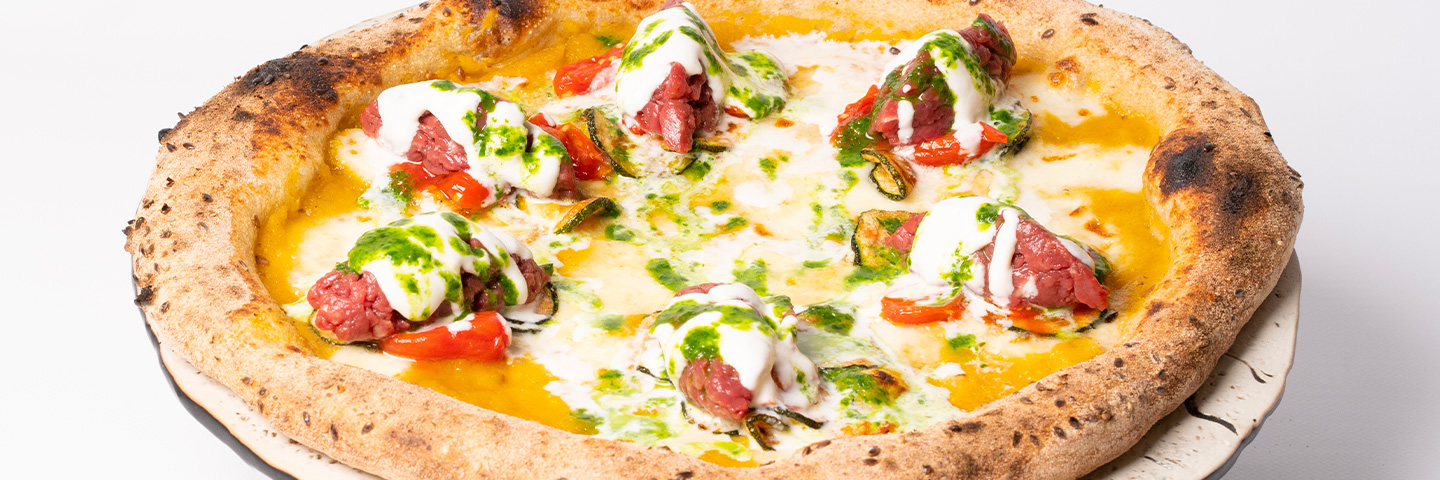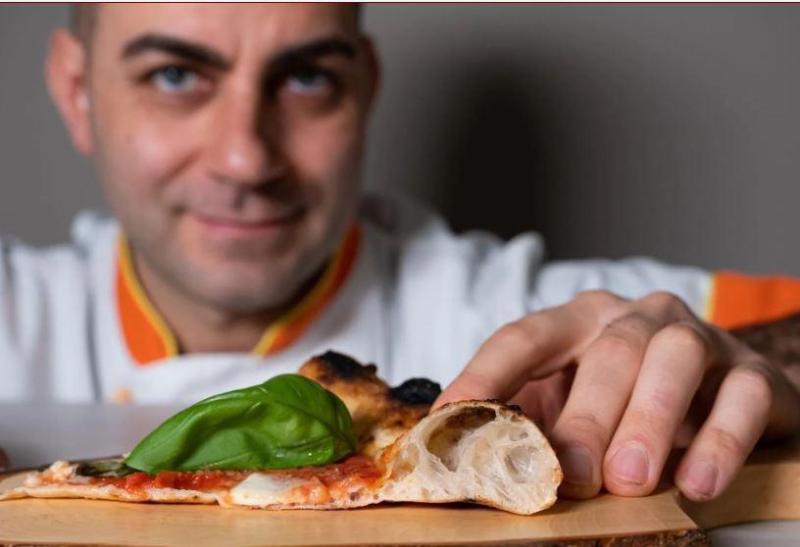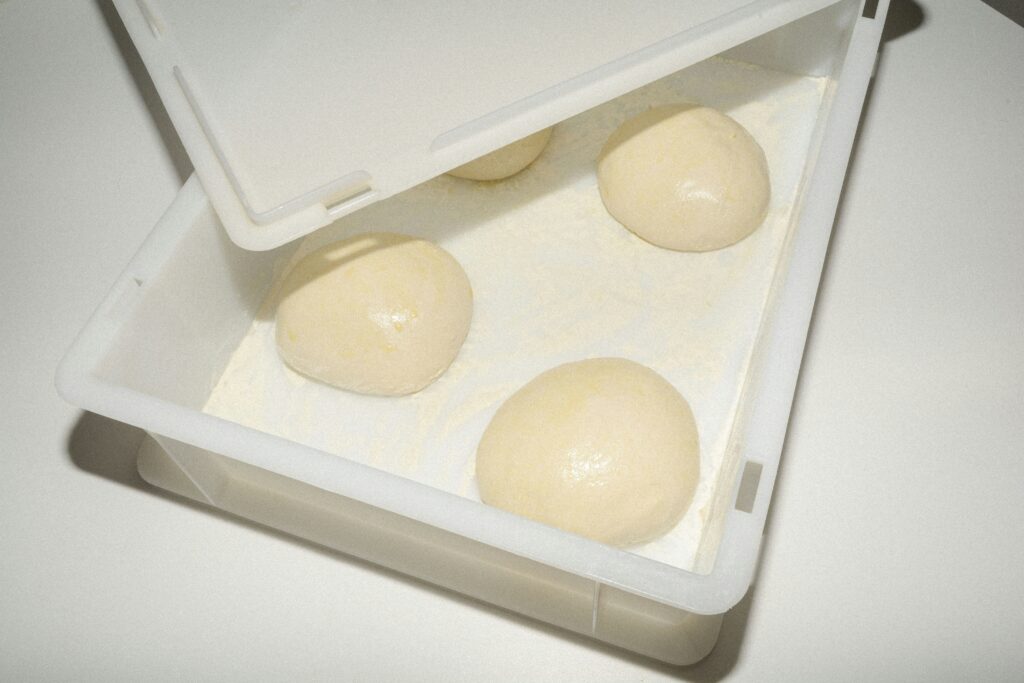
What quality pizza is today and in what way it can be recognized as such is still a thorny issue: for some years now we have been hearing about pizza, even in a controversial way. Indeed, beyond the undisputed “cultural” supremacy of the great Neapolitan tradition and the art of the pizza maker in the shadow of Vesuvius, which has become a Unesco heritage site, existing but lesser-known strands have become known and extremely heterogeneous trends have sprung up. Beyond everything, the still heated quarrels and the debates about what can basically be called “pizza” and what are its boundaries from a technical-descriptive point of view, we are of the opinion that we can talk about the genre of pizza and it is no longer current to refer only and only to Naples to identify a national dish that has undergone an important evolution over time.
Hence, in addition to the Neapolitan pizza, queen in the collective imagination, there are pizzas from the most varied origins, not more or less good, but different. It should be remembered that in the North, in the early days of pizza, in the late 1960s and early 1970s, those who came from the South were legitimized to make pizzas more because of an unmistakable accent than because of any real technical competence in making them. Hence pizzas that had very little to do with the true Neapolitan, apart from the round shape: very stretched out, with a very little pronounced rim, often more crispy than melting. In short, a different thing, so much so that once a few true Neapolitan pizza makers arrived, it was not the one who was most successful with his pizza, given the northern habits.
The technical aspects related to the various types of pizzas, the doughs adopted to make them, the different leavening methods, the different oven feeds, would require a small encyclopedia to cover. The fact is that for more than a decade now, pizza makers with different ideas about what pizza is have risen to prominence: absolute masters such as the many great Neapolitans, Franco Pepe in the Caserta area, great figures such as Simone Padoan of I Tigli and Renato Bosco of Saporè from Veneto have revolutionized its form of expression. There is no shortage of the Roman tradition, with approaches related to haute bakery such as that of Gabriele Bonci or the style of Giancarlo Casa of La Gatta Mangiona, the Turin “padellino,” the crispness of pan pizza, and again the Emilian area with the Aloe brothers of Berberè and the Faentine Davide Fiorentini with O’Fiore mio. This is to talk about the forerunners, because it can be said that by now every corner of Italy has its own pizza. Mountain included, with Denis Lovatel of the pizzeria da Ezio, who in Alano di Piave in the Belluno area (and recently in Milan as well) has made known his dough that generates a very thin and crunchy product that comes from a ball of only 170 grams and was the first to work on the issue of sustainability in this now incredibly heterogeneous world.
So there is no point now in continuing to scramble for a definition of what is and what is not pizza, except to distinguish between Neapolitan “type” and what might be called a range of “contemporary” pizzas. Not least because the term gourmet is outdated and means little, especially in light of a quality that has risen so much over time. So, banishing extremist positions, how do you recognize quality pizza? The doughs are the most diverse, as are the leavening: there is no absolute best way, certainly there is one that enhances one type of pizza rather than another. Therefore, it is useless to confuse the consumer with peremptory and incontestable statements: it is not a sourdough starter itself (which must be handled with great wisdom) that makes a pizza better than one made with brewer’s yeast, with direct dough or with the use of biga, but the result obtained through the mastery of the artisan who makes it. Then there are the preferences accrued by each person over time: as mentioned earlier, it is not automatic that a “true” Neapolitan meets the taste of the northern public accustomed to pizzas that are generally crispier and have a less voluminous crust. Nor is it set in stone that the “focaccia” style is to be preferred tout court to a more traditional one.
On the other hand, there are more, if you will, “objective” criteria, such as baking, which must be homogeneous so that it does not have excessive burn marks in the case of the round, nor must it be chewy to the bite or have excessively moist parts. Too many bubbles are an indication of imperfect rising. An indicator of good baking is also obtained by squeezing the ledge with a finger and releasing it: it is not a good sign if it does not rise. And speaking of the cornice, it should always be eaten, also to appreciate the pure leavened dough.
Here we come to a sore point, which is the digestibility of the dough, which more than from the longer or shorter duration of rising comes from its subsequent maturation. Grafted onto this issue is the question of fillings, which are also decisive in relation to the taste, digestibility and caloric value of a pizza. Poor raw materials are not yet completely out of the picture, but the best pizzerias are those that look carefully at the seasonality of the products used, the selection of suppliers that guarantee a high quality of product, even better if it comes from the territory and meets ethical and sustainability criteria.
Not the least of which is the selection of available beverages, be it beers or as yet not taken for granted, a wine list that often goes even better with pizza. It is a matter of knowing how to choose a pizzeria, being wary of overly low prices and overcrowded places in any case, on pain of being guaranteed a night of fetching water and tossing and turning in bed constantly because of improbable doughs and second-rate ingredients. Because, it should be remembered once again, pizza is no longer just a street food to be consumed in a hurry, but may well represent a new borderline expression of cuisine, including haute cuisine, thanks to increasingly trained and ambitious professionals.



